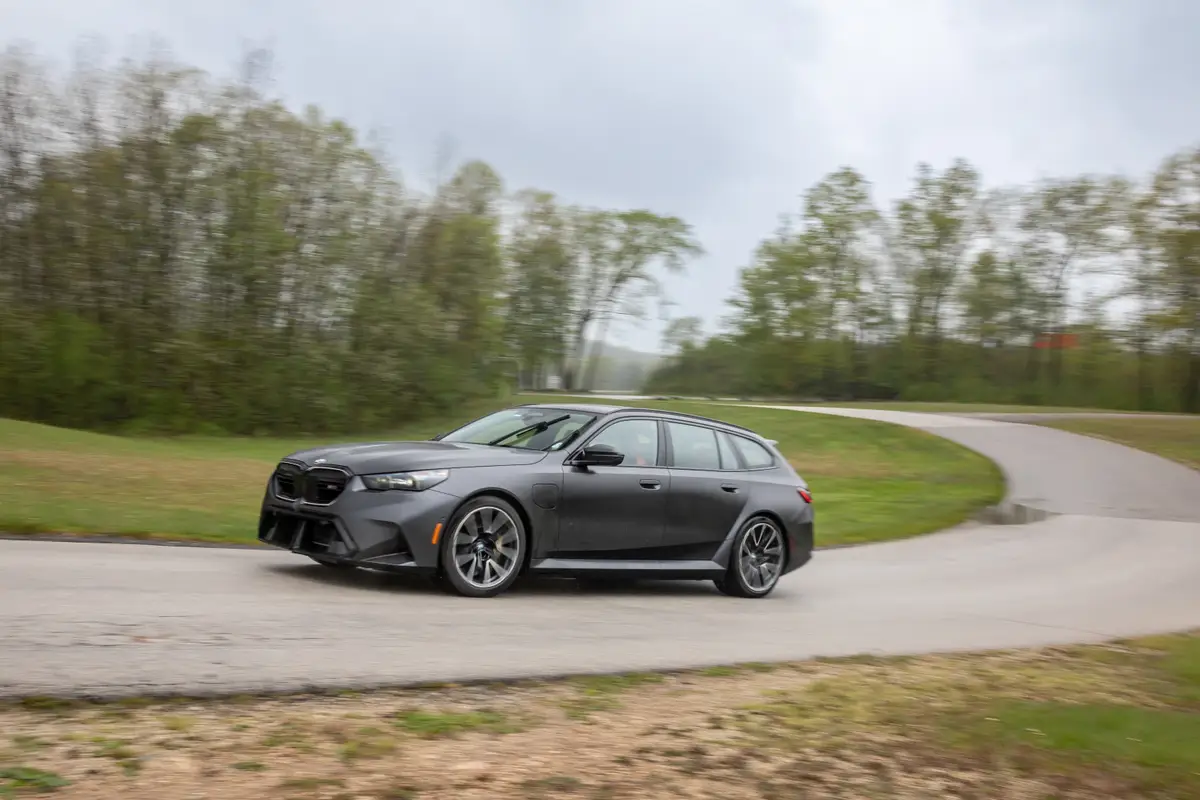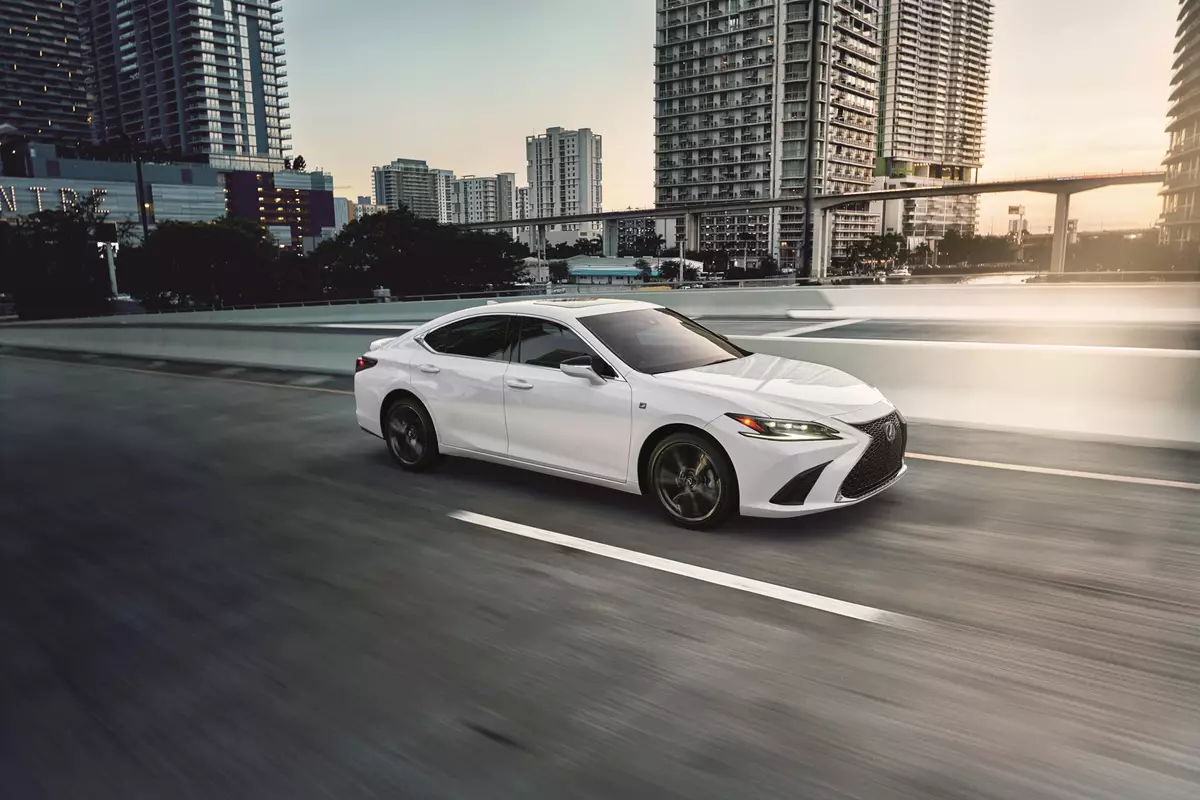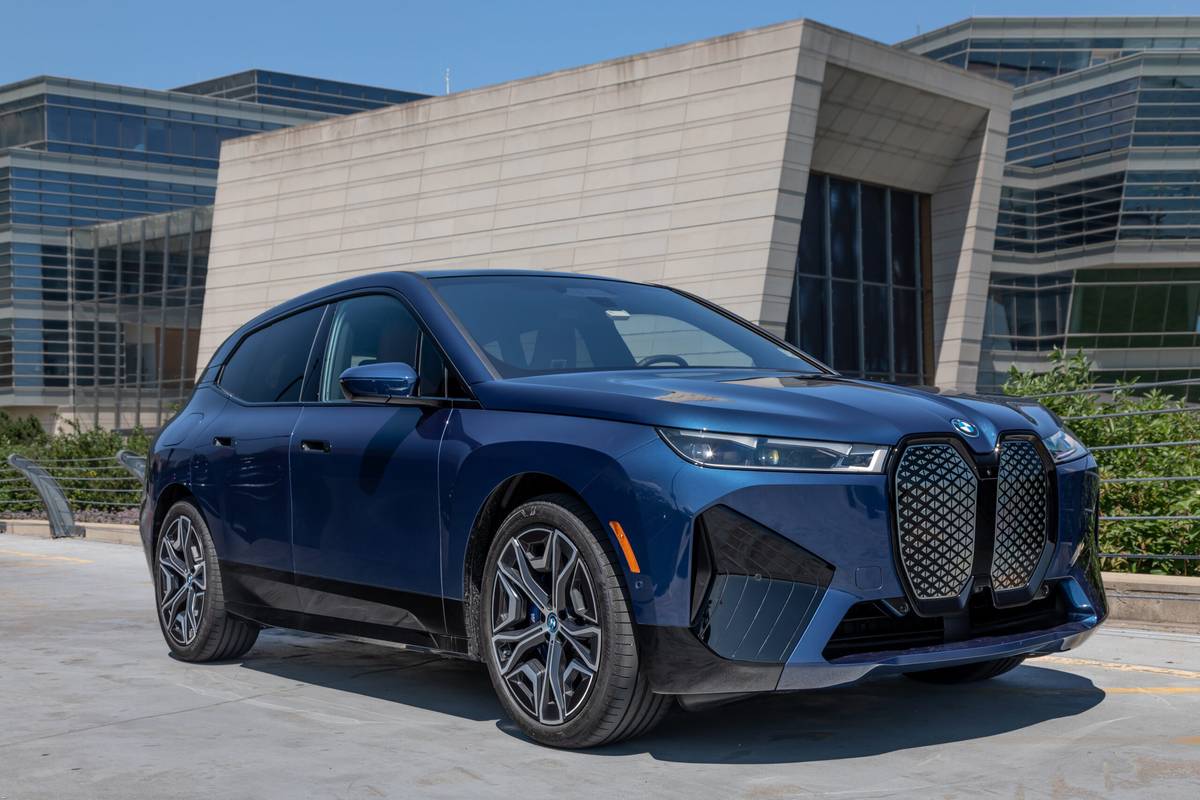Video: 2022 BMW i4: Review
By Cars.com Editors
October 14, 2022
Share
Transcript
(upbeat music) The words performance and efficiency aren't often used together to describe a car, but the 2022 BMW i4 delivers both.
The compact electric car is fast, powerful, and has an impressive all electric range of up to 301 miles depending on trim level. It competes against the Tesla Model 3, which has an EPA estimated range of 272 to 358 miles depending on trim level. And the Tesla Model Y, which is EPA estimated for 330 miles. The i4 is all new for 2022, and joins the BMW iX in the automaker's electric car lineup. But unlike the iX, which has kind of wild electric car styling, the i4 is styled much more like a traditional car, with a coupe-like roof line and a familiar looking grill. This is the sport oriented M50 trim, which sits at the top of the lineup. It uses a dual motor all-wheel drive setup, and is good for 536 horsepower, and an all-electric range of 227 miles according to the EPA. Wait, what happened to the 300 mile range number? A couple of things. First, this performance oriented version offers more power than the base model, but much less range. Base eDrive40 models have a rear wheel drive single motor drive train that makes 335 horsepower and is good for 301 miles of range. Wheel size is also a factor. This M50 rides on 20 inch wheels. They look cool, but they'll cost you in range. M50 models that ride on 19 inch wheels are good for 270 miles of range, but in general around town, the M50 isn't very comfortable for a couple of reasons. Ride is just one of them. The others are going and stopping. Power is near instant and pin you in your seat strong from a stop, which makes it a hoot on the highway. Effortless speed pours on with a tap of the throttle for exhilarating merging and passing. But in stop and go driving, reining it in is a challenge. Part of the issue here are the brakes. The i4's regenerative braking system is touchy and can be tough to get used to. Until I got the hang of modulating the pedal, my passengers complained of lurching, as the car starts abruptly decelerating as soon as you remove your foot from the gas pedal. It's adjustable, and took some playing around to find my comfort zone. Pop it into B Mode on the gear selector for one pedal driving, which allows the car to brake to a complete stop without using the brake pedal. Here again, the brakes have an abrupt severe feeling, but this is the setting that saves the most energy. Case in point, after leaving home with a 100% charge, I noticed range being added to my gauge after driving in B Mode for several miles around town. The car's range estimate and gauge were pretty accurate during my test. I started one trip with a full battery and 227 miles of range on the gauge. After driving 119.1 miles, the car said I had 45% battery left, and a remaining mileage range of 111 miles, which would put me slightly over the 227 mile total range estimate. Charge times also proved accurate. Using a Level 2 charger, BMW says the i4 goes from zero to 100% charged in around seven and a half hours. There are some things I love about the i4's control interface, and some things that I really don't like. First, I am a fan of all of these screens. The huge touchscreen flows seamlessly into the gauge cluster. The touchscreen has crisp graphics, intuitive menus, is easy to read, and is all around really easy to use. The home screen is logically chunked into clear sections, and an intuitive swiping action reveals more of 'em, like charging data. I'm surprised by how much I like this system. Usually, I find BMW's control interfaces kind of fussy and not very intuitive, but this one is the opposite. Drivers can also create individual IDs that can be used to tailor settings and controls to specific drivers. Overall, I find the i4 system a lot easier to figure out than Tesla's confusing control setup. In the i4, using Android Auto via the wireless connection was seamless, and the Android Auto interface makes use of the whole wide screen, unlike in some other cars, which only display the Android Auto interface on part of the screen with wasted space next to it. Also, the head-up display ahead of the gauge cluster is configurable to show car data like your next direction when using Android Auto. The display is handy and unobtrusive. Speaking of obtrusive, there's this console area knob, which can be used to control everything that the touchscreen can. I don't like systems like this. I find them distracting and they pull focus from the road, so I don't like using them. Thankfully, this one is redundant so I don't have to use it. Overall, the i4 is about as long as a Tesla Model Y, but the Model Y has a bigger backseat, thanks to a couple inches more head room and leg room. The i4 is also a little bit longer than the Model 3, but the Model 3 has a bigger backseat than this does. So there's technically three seats back here, but this middle spot is best avoided. Due to its narrowness, it's raised up, and there's this really obtrusive floor hump. Kids in car seats don't have it much better back here. While there's accessible lower latch anchors for easy car seat installation, space is again an issue. I struggled to fit a rear facing infant seat back here. It severely impacted front passenger leg room. My twins are in booster seats, and those fit better once I removed the head restraints to situate them flush against the seat back. The buckles are on stubby stalks however, so they were tough for my kids to grasp and use without help. BMW calls the i4 a grand coupe, but what that really means is it has a sloping rear roof line and a hatchback style trunk. The roof line makes it tough to see out of in terms of rear visibility, but the hatchback makes for a great use of space in terms of cargo room. The opening is tall and wide, and there's a lot of usable room back here. Unlike other electric cars however, there's no front trunk space or frunk. The Model 3 and the Model Y both have frunks, which I like. The 2022 i4 is pretty competitively priced. A base i4 eDrive40 starts around 57,000, with the M50 model starting around $10,000 higher. A base Tesla Model 3 starts around $50,000, and a base Model Y at around $69,000. The i4 comes with a full suite of active safety systems, like forward collision warning with automatic braking and pedestrian and bicyclist detection. Semi autonomous features like cruise control with stop and go, as well as a self park system, are optional. The 2022 BMW i4 excels as a polished, powerful highway cruiser. Just make sure you choose your trim level wisely.
Featured stories

By Joe Bruzek
July 8, 2025

By Jared Gall
June 27, 2025

By Drew Koenig
June 26, 2025
